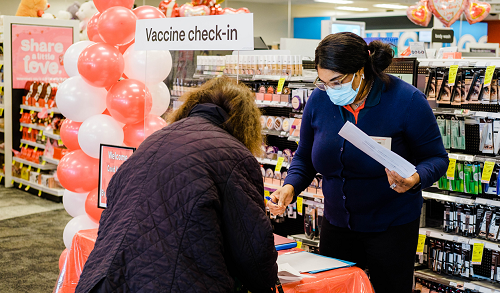
May 3, 2021 – Two national pharmacy chains that the federal government entrusted to inoculate people against COVID-19 account for the lion’s share of wasted vaccine doses, according to government data obtained by Kaiser Health News.
The Centers for Disease Control and Prevention (CDC) recorded 182,874 wasted doses as of late March, three months into the country’s effort to vaccinate the masses against the coronavirus.
Of those, CVS was responsible for nearly half, and Walgreens for 21%, or nearly 128,500 wasted shots combined.
CDC data suggests that the companies have wasted more doses than states, U.S. territories and federal agencies combined. Pfizer’s vaccine, which in December was the first to be deployed and initially required storage at ultracold temperatures, represented nearly 60% of tossed doses.
KHN said it was unclear from the CDC data why the two chains wasted so much more vaccine than states and federal agencies. Some critics have pointed to poor planning early in the rollout, when the Trump administration leaned heavily on CVS and Walgreens to vaccinate residents and staff members of long-term care facilities. In response to questions, CVS said “nearly all” of its reported vaccine waste occurred during that effort. Walgreens did not specify how many wasted doses were from the long-term care program.
Months into the nation’s vaccination drive, the CDC still has a limited view of how much vaccine is going to waste, where it’s wasted and who is wasting it.
A CVS spokesperson, Michael DeAngelis, in an email blamed wasted doses on “issues with transportation restrictions, limitations on redirecting unused doses, and other factors.”
Walgreens said its wastage amounted to less than 0.5% of vaccines the company administered through March 29, which totaled 3 million shots in long-term care facilities and 5.2 million more through the federal government’s retail pharmacy partnership.
The reasons states gave for waste varied, from broken vials and syringes, to provider storage errors, to leftover doses from open vials that couldn’t be used. The largest waste incidents, in which hundreds of doses were lost at a time, tended to be due to freezer malfunctions or workers leaving doses at room temperature too long.
